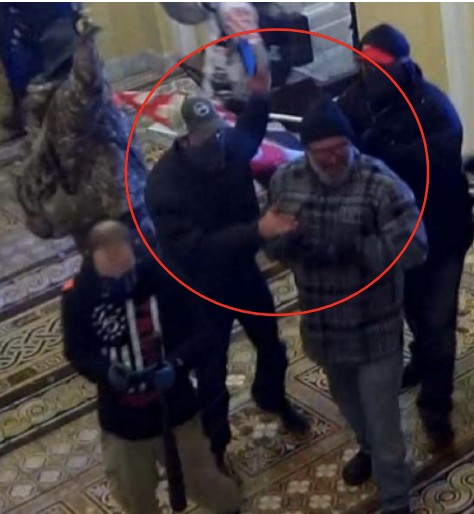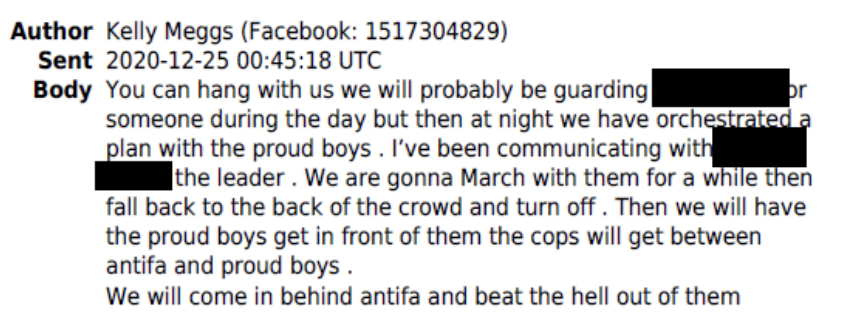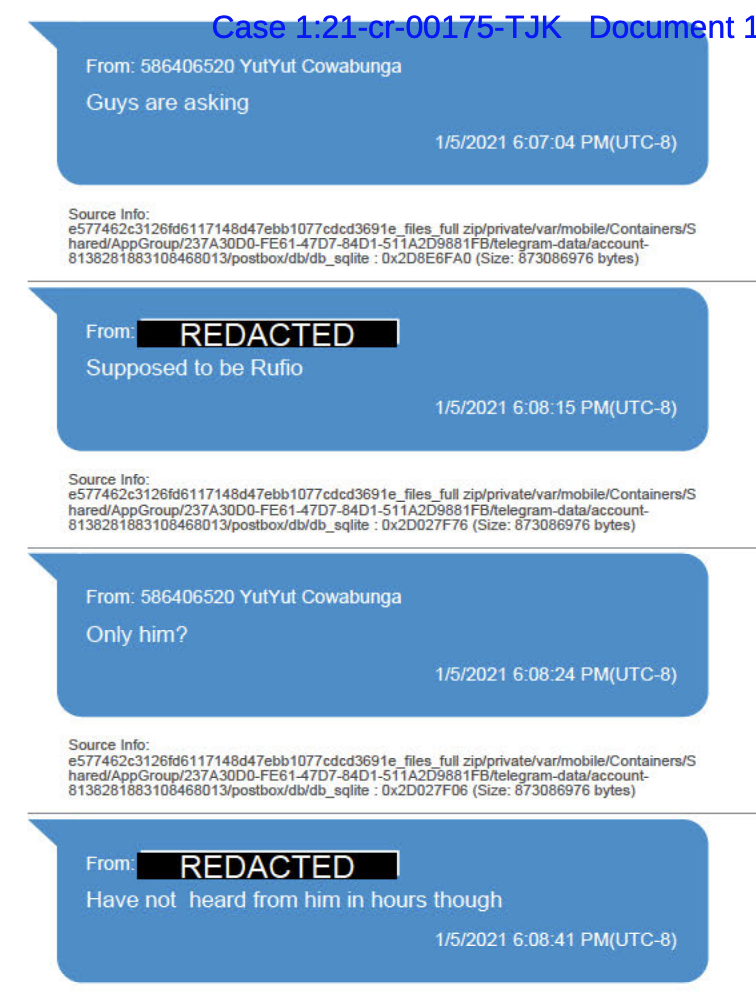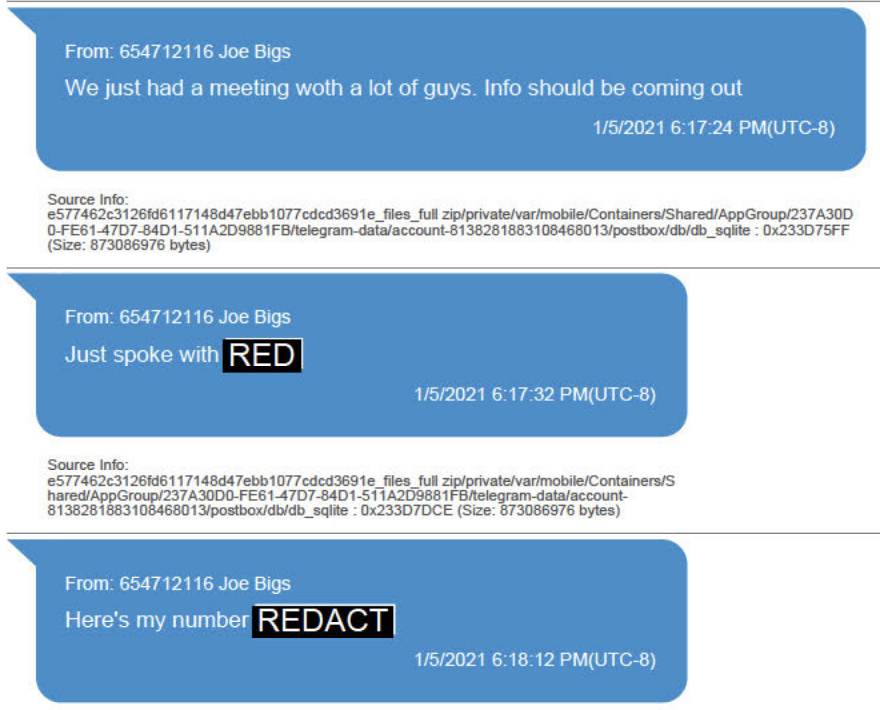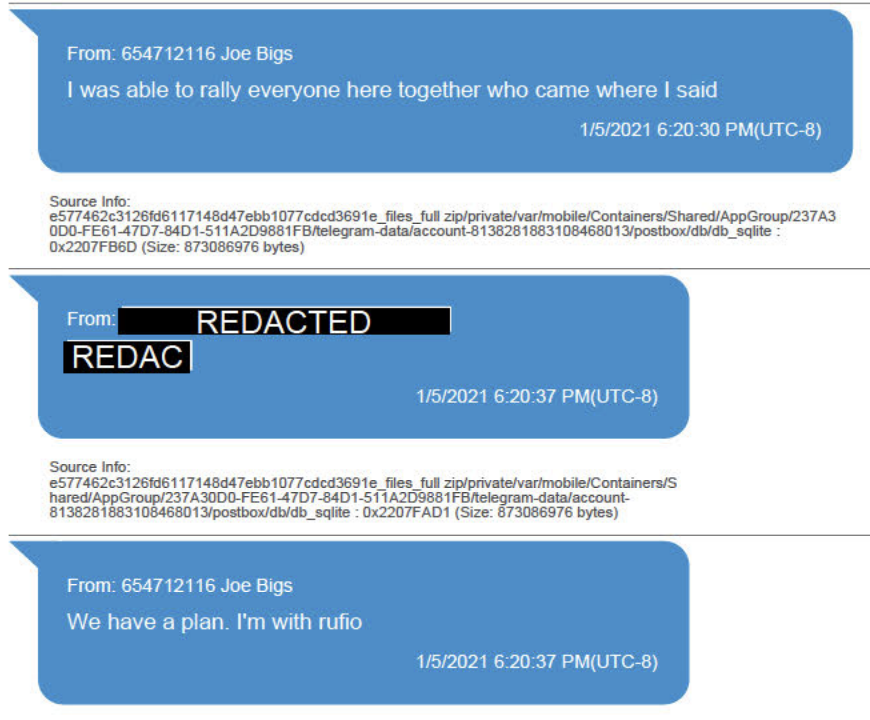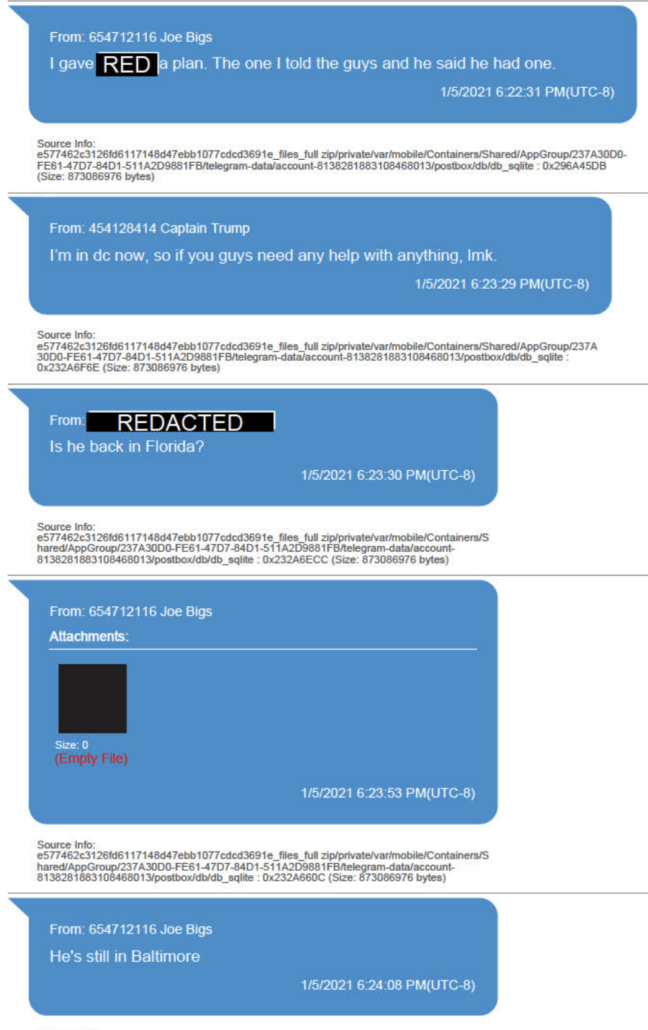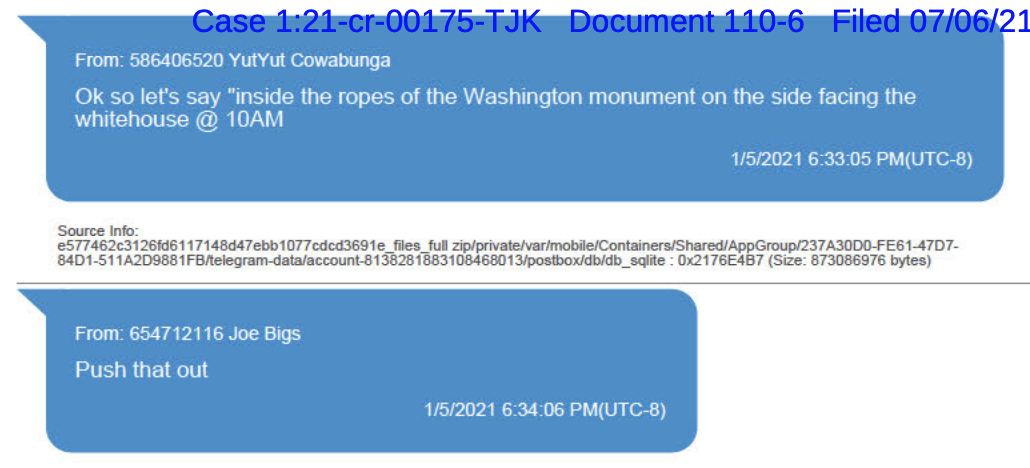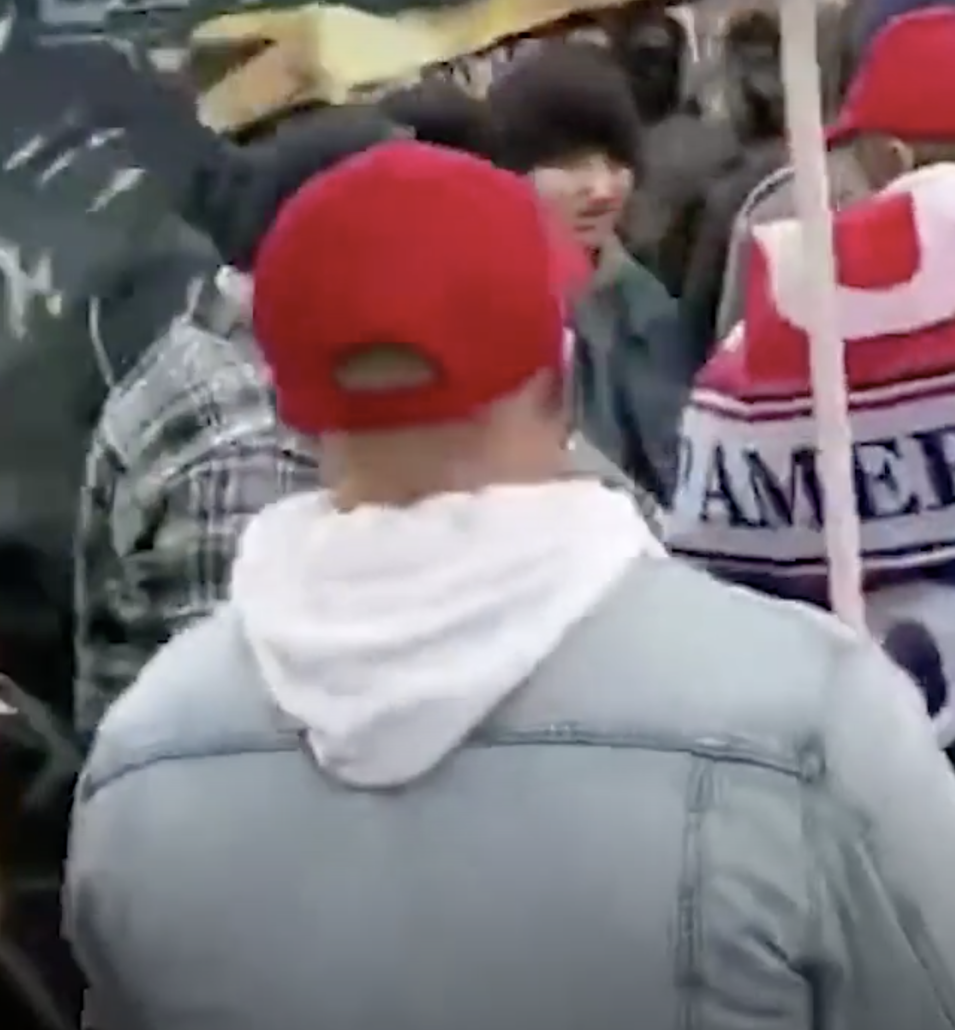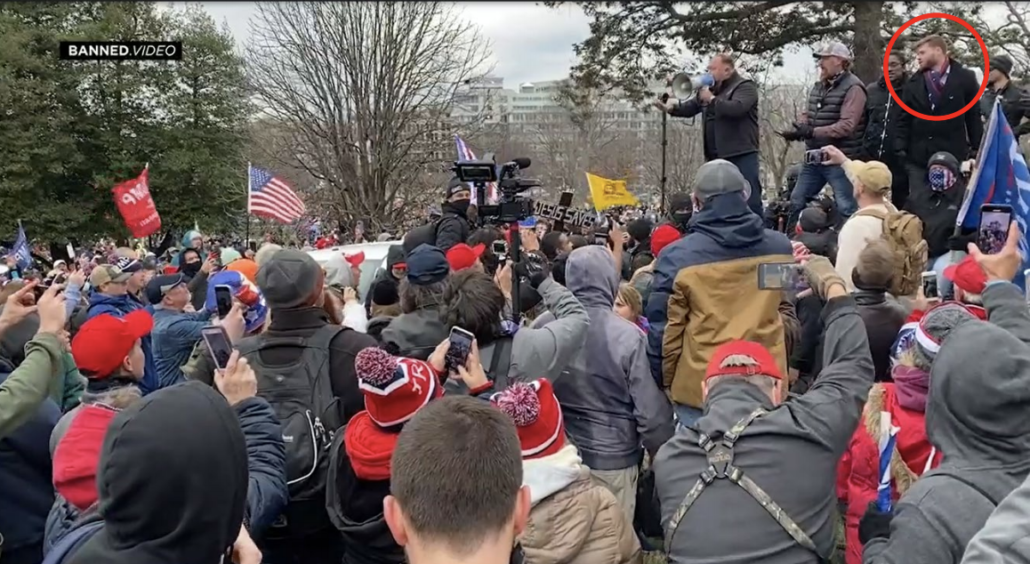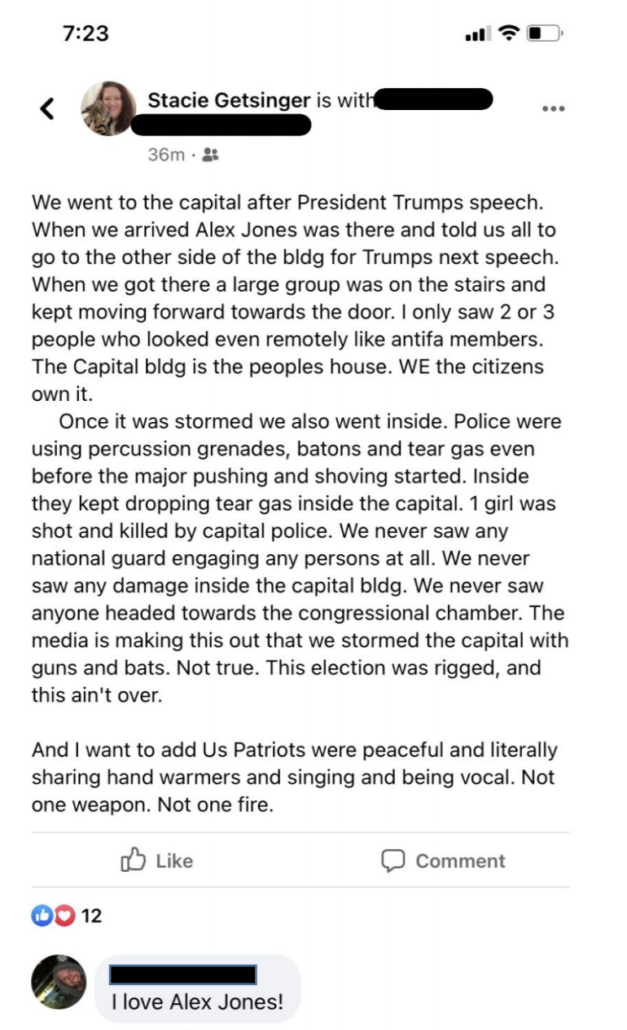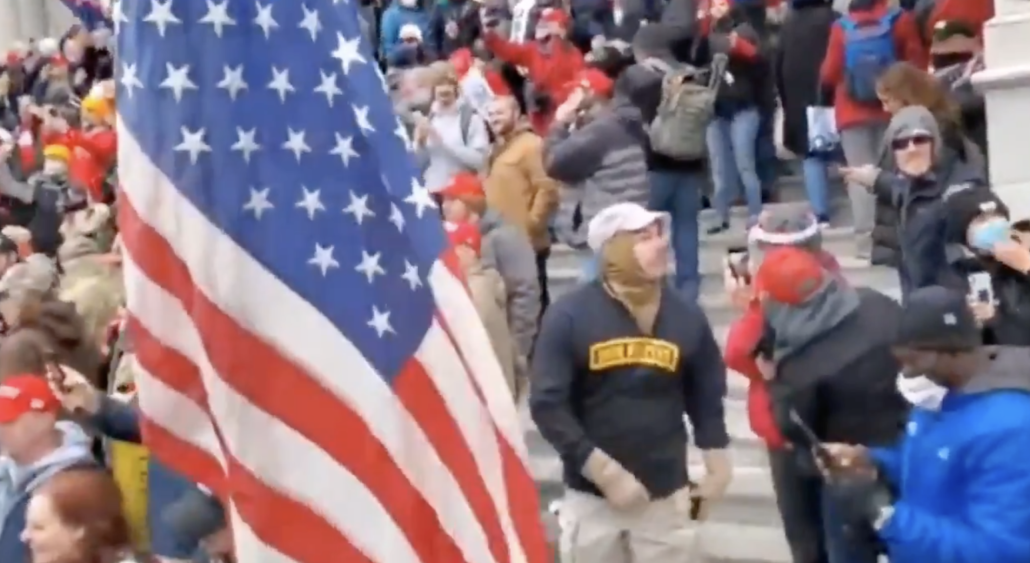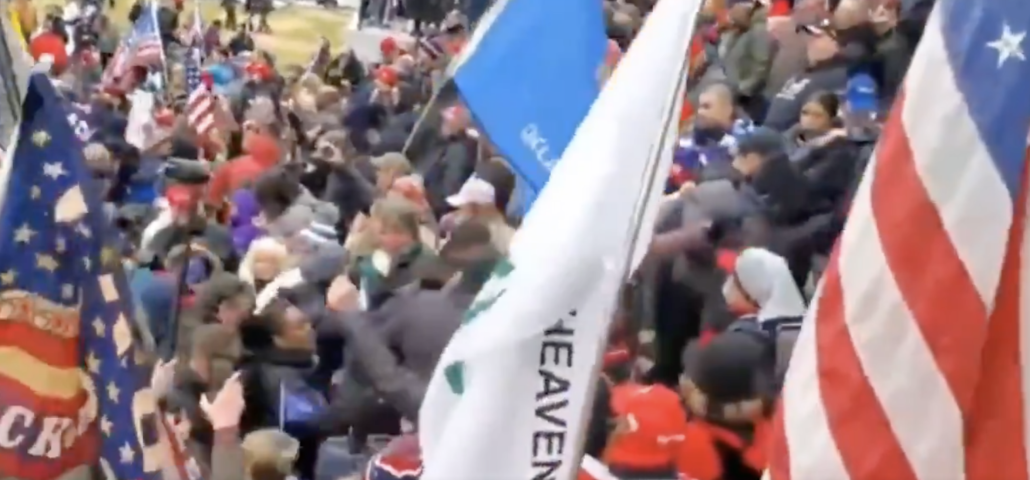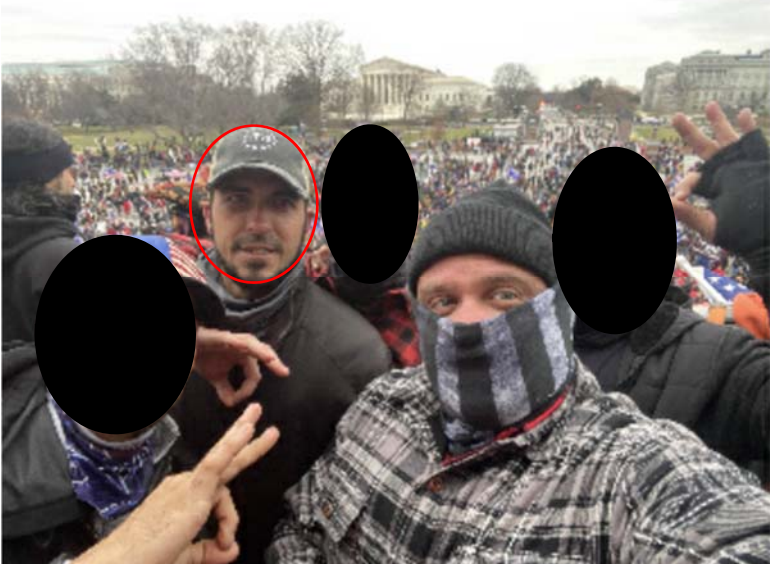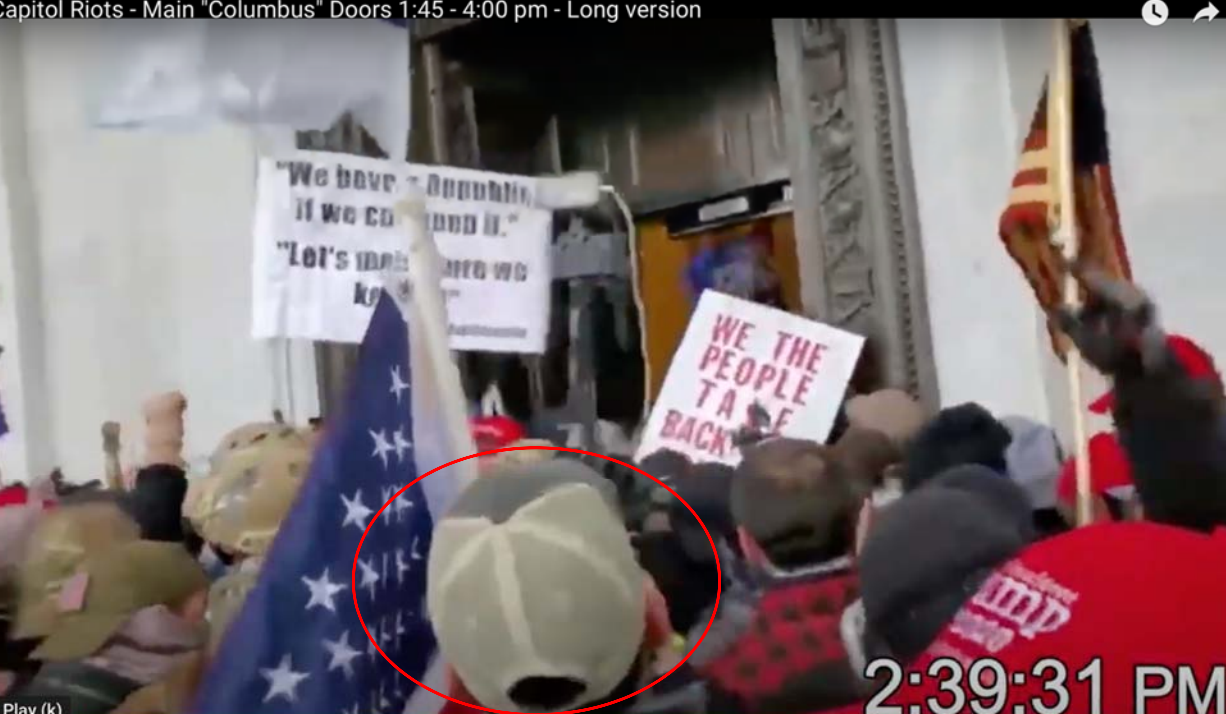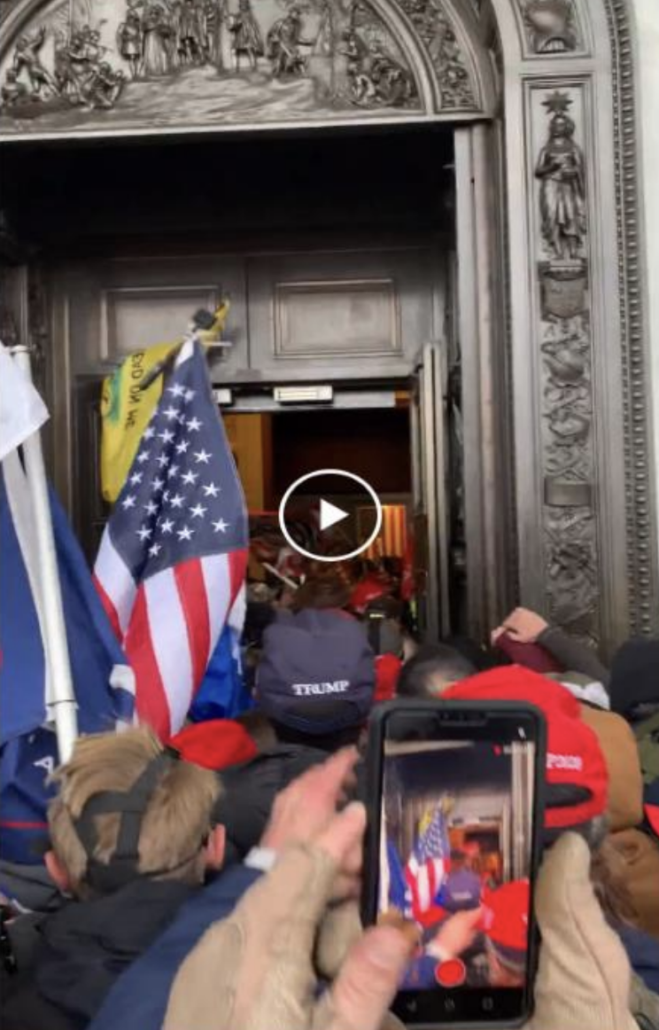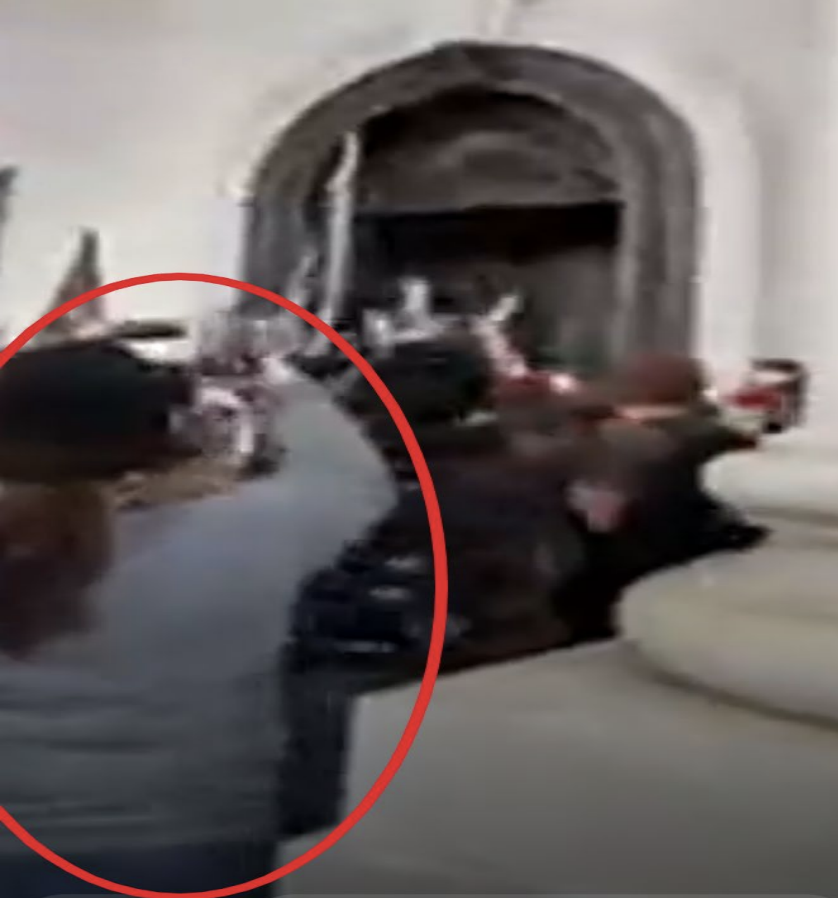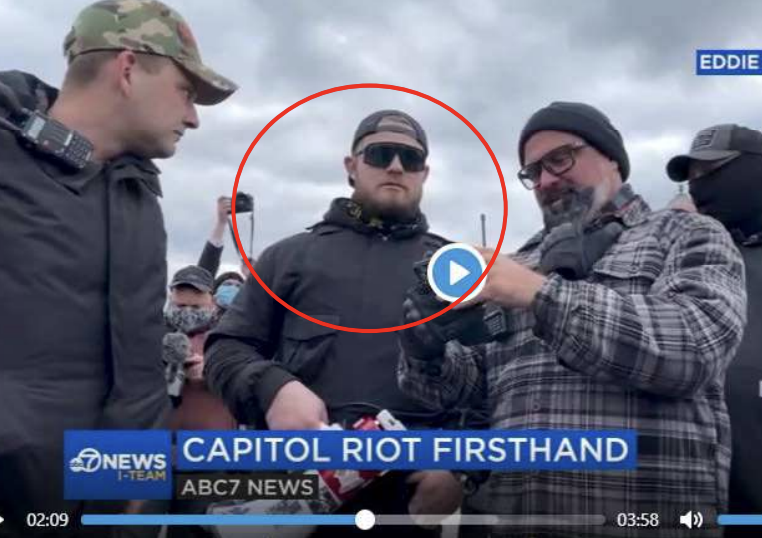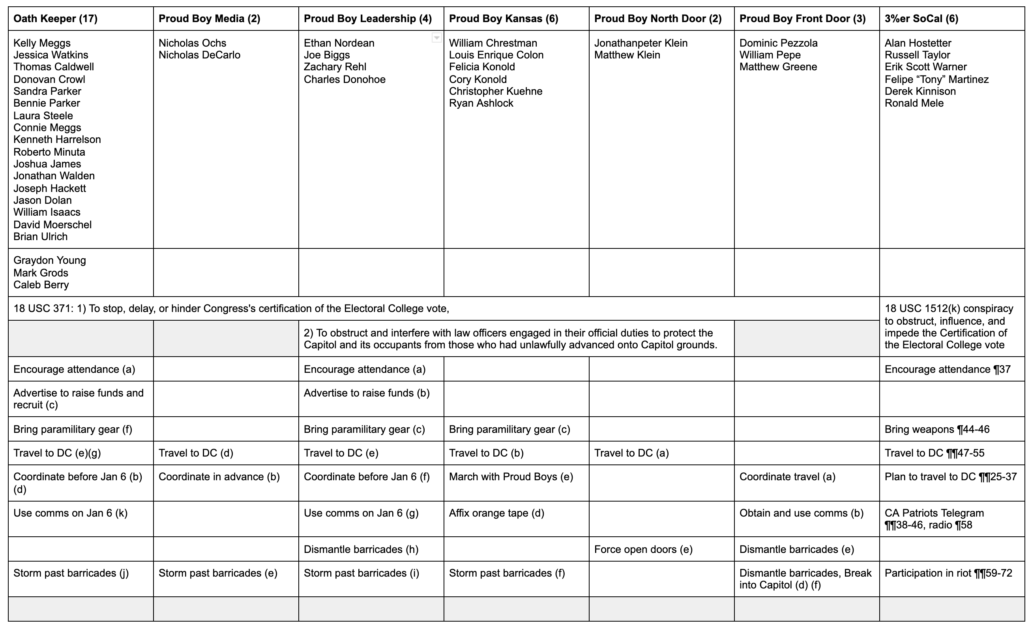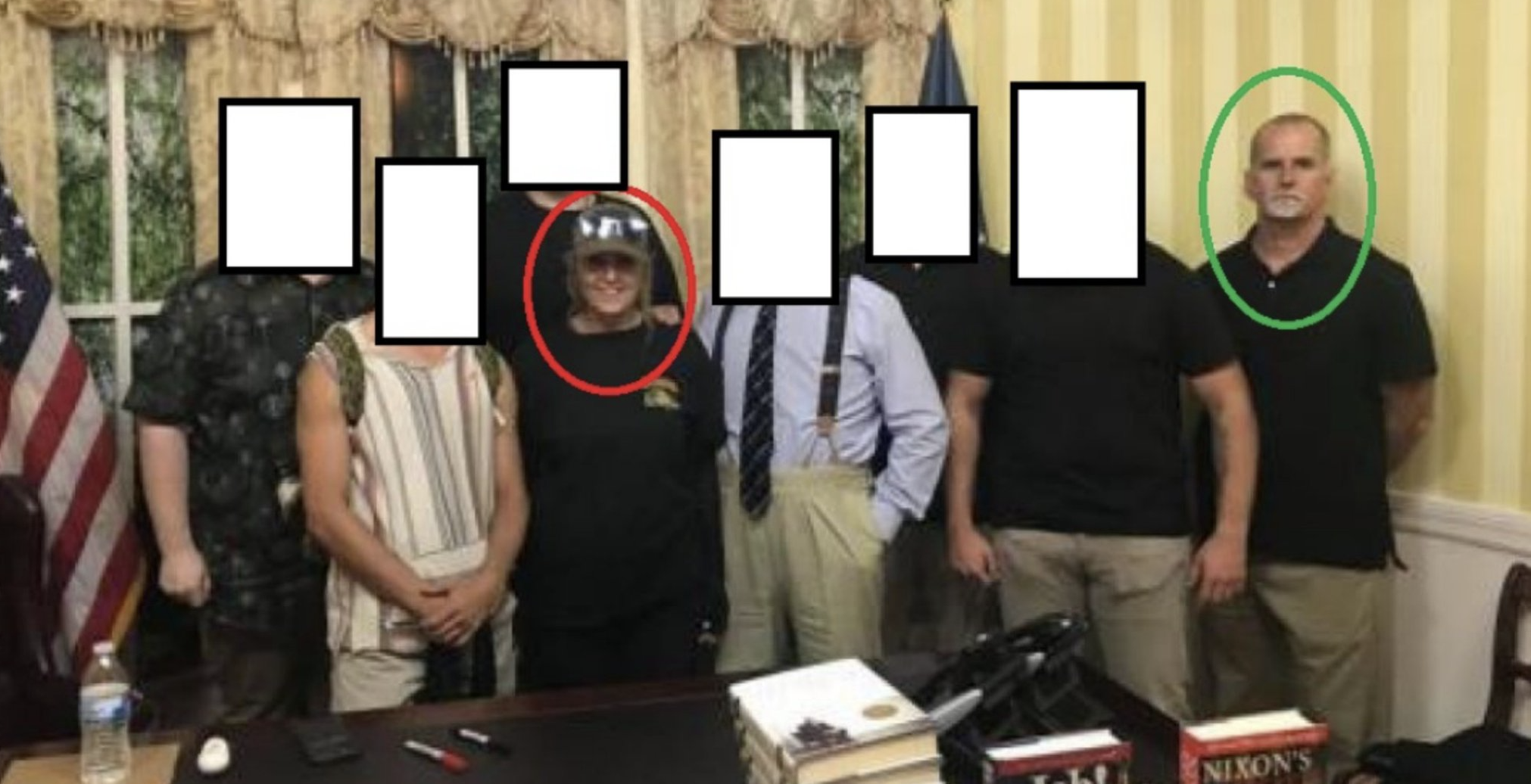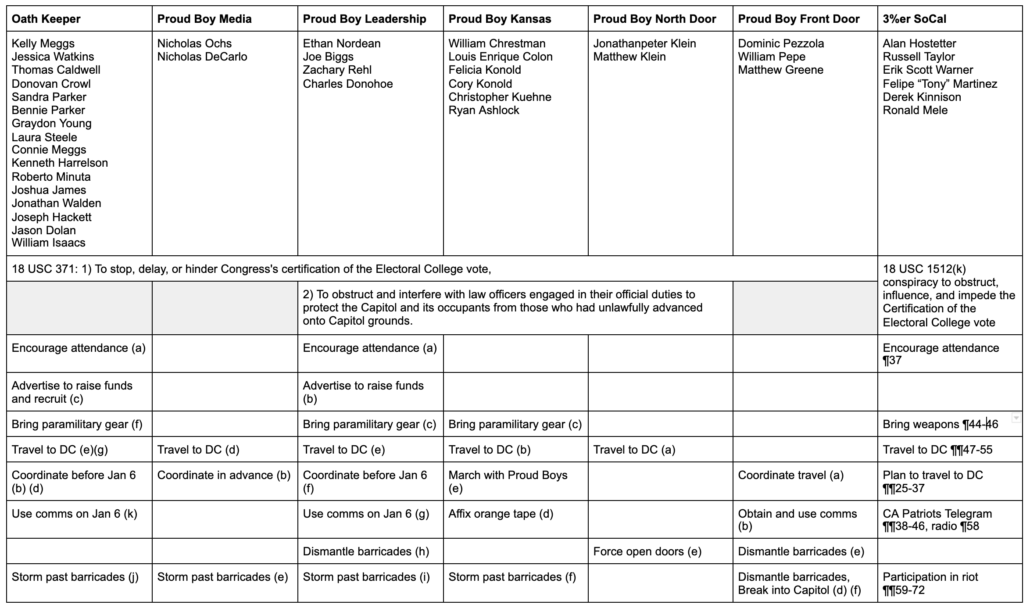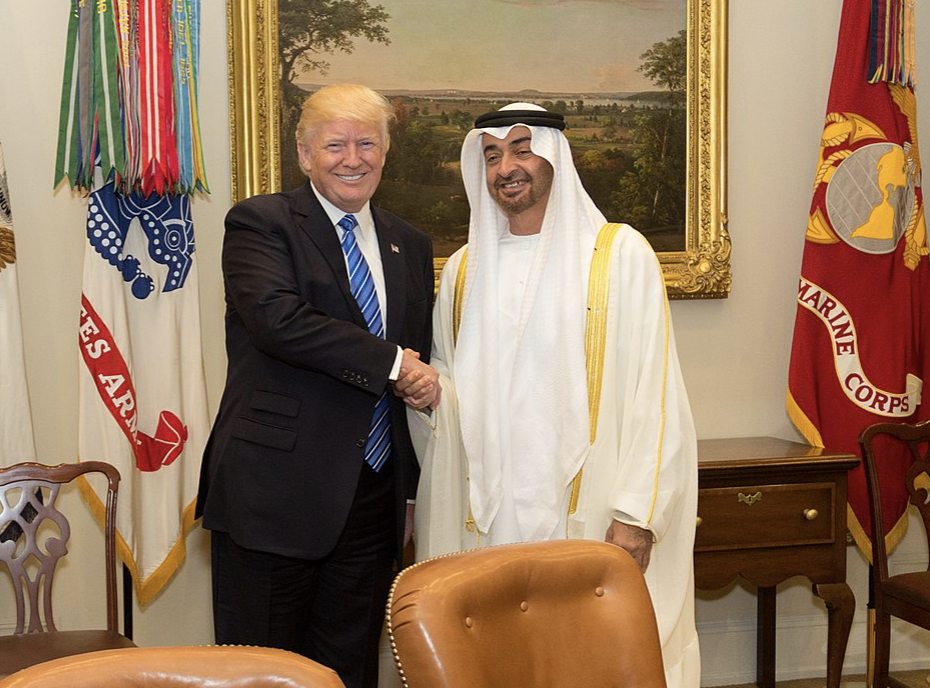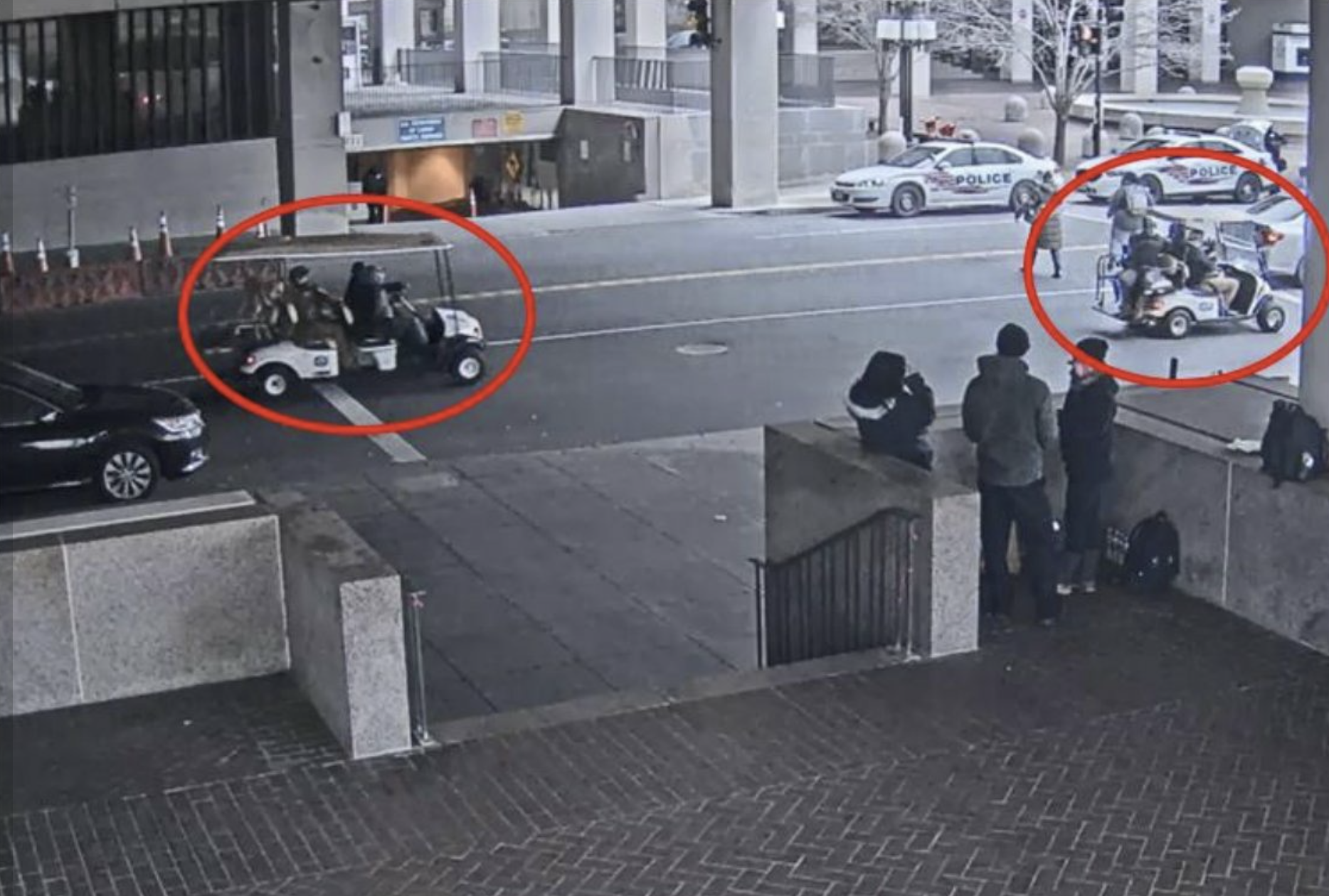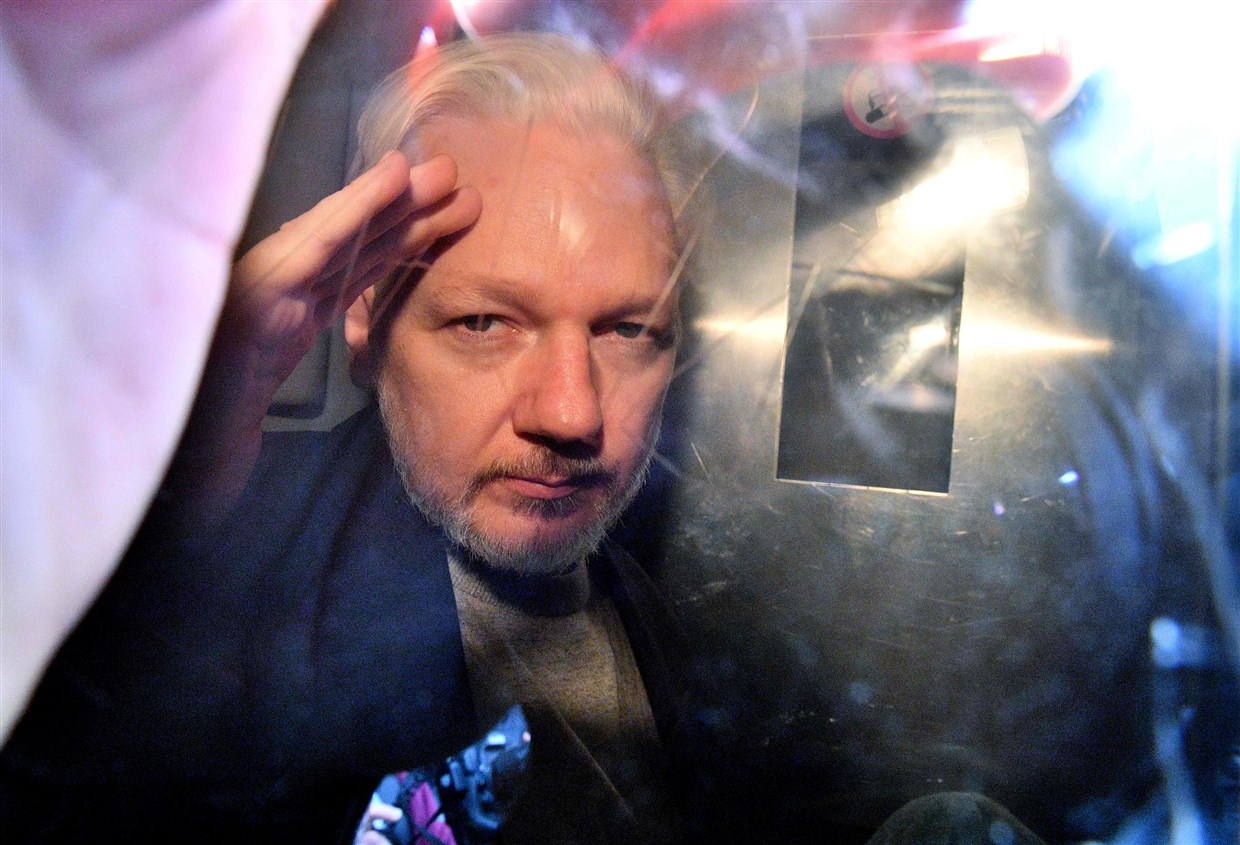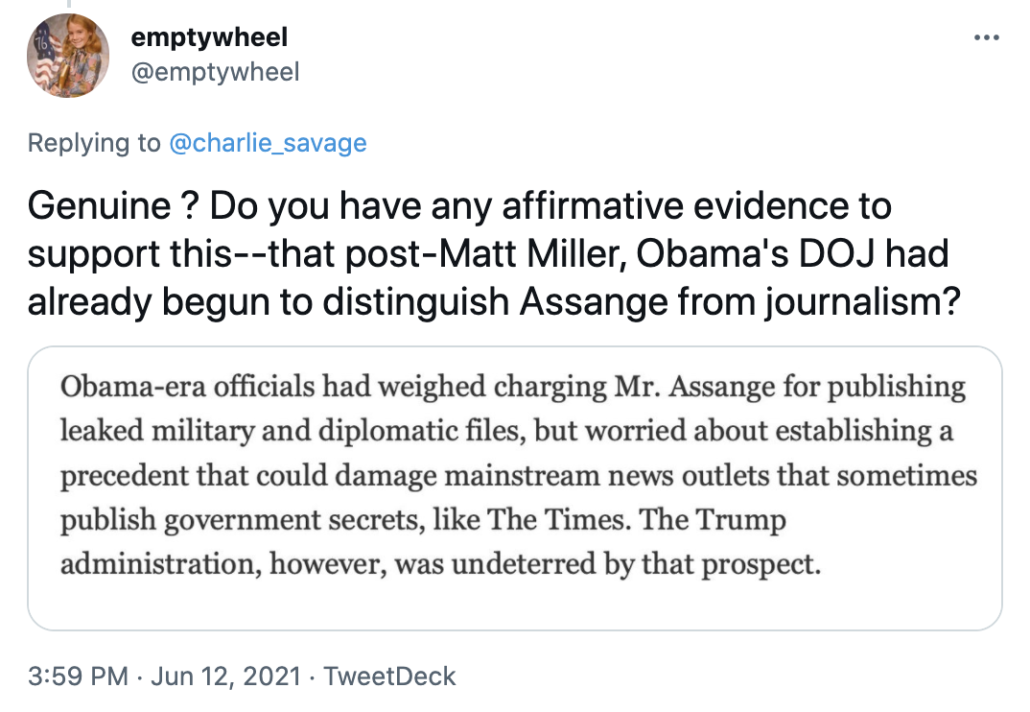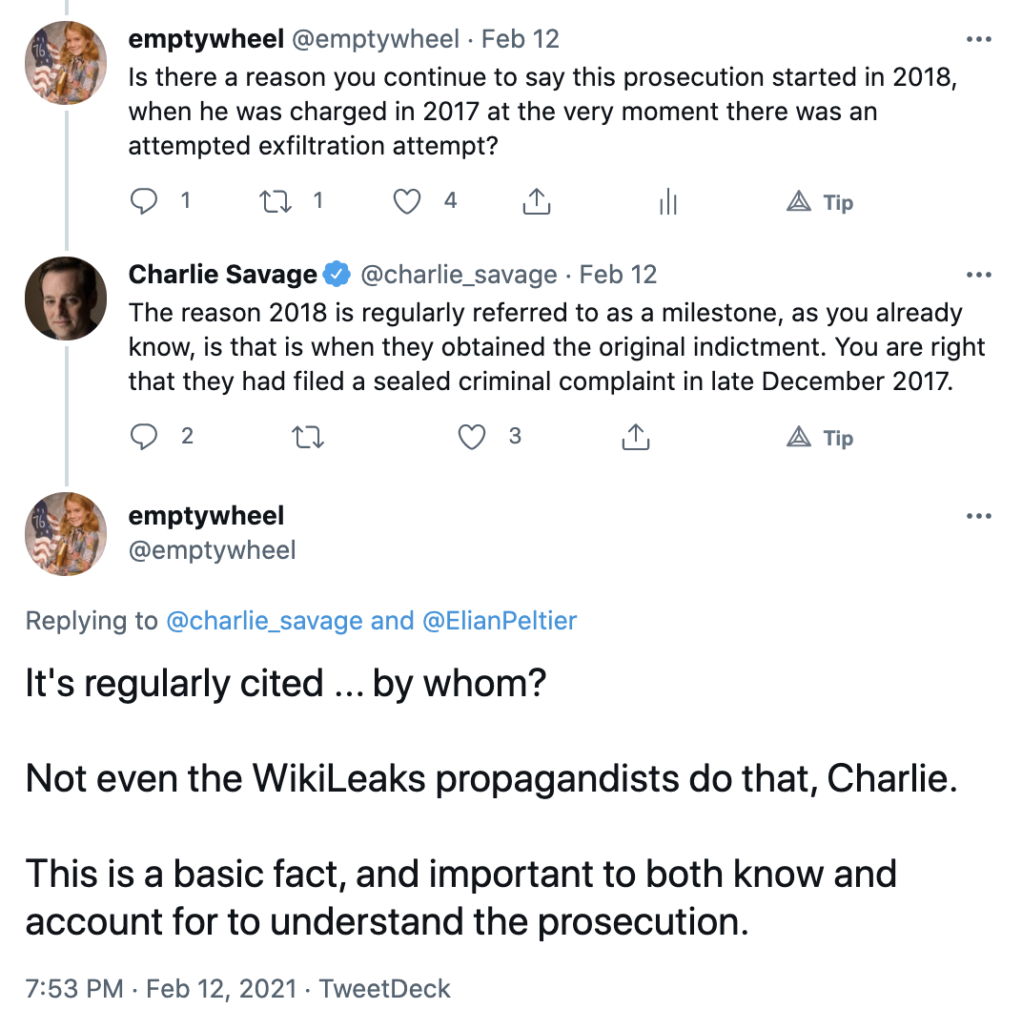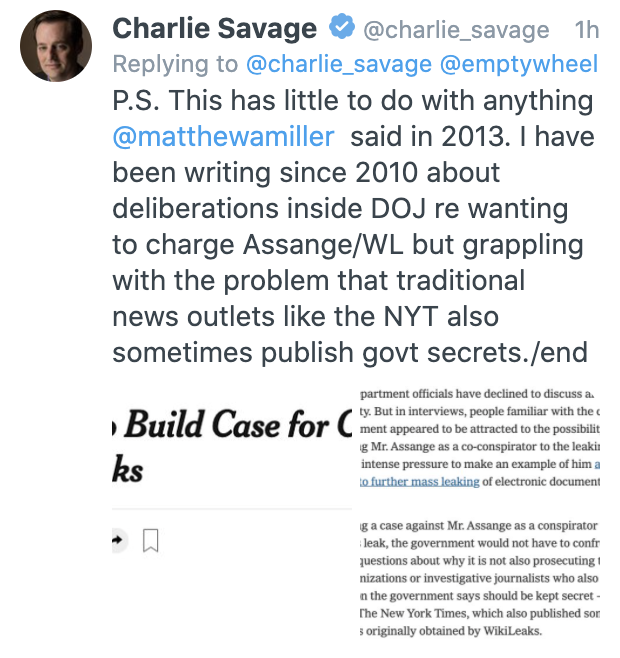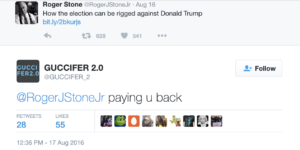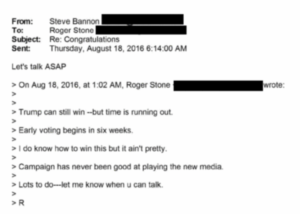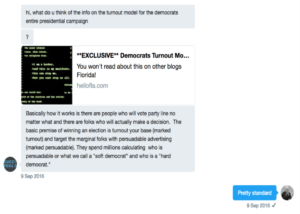As of this moment, the government has obtained five misdemeanor guilty pleas, one straight up felony plea, and two cooperation pleas in the January 6 investigation. With an eye towards understanding the Graydon Young plea, I’d like to look at the stories — or lack thereof — that the government is telling with its Statements of Offense.
DOJ’s reticent Statements of Offense
Thus far, the government is using Statements of Offense for their functional purpose, to lay out how the defendant’s behavior meets the elements of the offense to which they plead guilty, and not to tell a larger story about the investigation (as, for example, in the Robert Mueller did with some of his guilty pleas).
Generally, the misdemeanor SOO are more succinct than the arrest affidavit for the same defendant. For example, in their SOO, there’s less detail of Jessica and Joshua Bustle’s social media postings or evidence from the geofence warrants than in their arrest affidavit. Instead the SOO lays out that they were in the Capitol, that they carried anti-vaccine signs (which supports their parading charge), and adds that the reason they were there was to “demonstrate against the certification of the vote count.” Similarly, Robert Reeder’s SOO doesn’t include details of the pictures he took while inside the Capitol, which were described in his arrest warrant; it focuses on the alarms ringing when Reeder entered the building, that Reeder ignored a cop’s response that “We don’t have any water in here, sir” when he walked past the cop into the building, and his second trip inside, all evidence making it clear his trespass was knowing and intentional. There is something new in Bryan Ivey’s SOO that wasn’t in his arrest affidavit: that he deleted all the photos and videos he took inside the Capitol which, if the FBI wasn’t able to restore them, would represent the loss of valuable evidence about the first rioters inside the building.
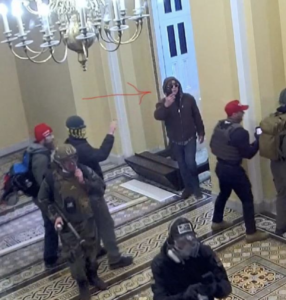
That will likely be used in sentencing to distinguish Ivey at sentencing from someone like Anna Morgan-Lloyd who was able to fully cooperate with law enforcement.
Similarly, the SOO for the one straight felony plea, that of Paul Hodgkins, adds almost nothing from his arrest affidavit, aside from a paragraph establishing his intent to obstruct the vote count, which is an element of the obstruction charge he pled guilt to.
Hodgkins knew at the time he entered the U.S. Capitol Building that that he did not have permission to enter the building, and the defendant did so with the intent to corruptly obstruct, influence, and impede an official proceeding, that is, a proceeding before Congress, specifically, Congress’s certification of the Electoral College vote as set out in the Twelfth Amendment of the Constitution of the United States and 3 U.S.C. §§ 15-18.
There’s not even any language explaining the import of Hodgkins having helped occupy the Senate, as compared to those charged with misdemeanors.
There’s nothing at all wrong with this. Indeed, with the conveyor belt of plea deals that are about to go forward, doing this as efficiently and soundly, from a legal standpoint, as possible makes sense.
The cooperation deals also don’t tip DOJ’s hand
It’s not surprising, then, that the SOOs for the two cooperation deals provide little hint of what the men, Oath Keepers Jon Schaffer and Graydon Young, traded in hopes of working off their sentences. Admittedly, Schaffer’s SOO included two comments he made at the Million MAGA March on November 14, 2020 that were also included in his arrest affidavit. But like the arrest affidavit, the only link made between Schaffer’s actions on January 6 and the Oath Keepers is the Oath Keepers hat he wore to insurrection.
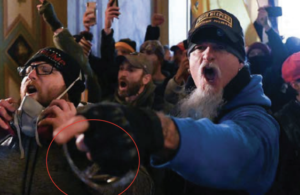
Instead, Schaffer’s SOO focuses on the elements needed to sustain Schaffer’s obstruction and trespassing with a deadly weapon (bear spray) charges.
Wearing a tactical vest and armed with bear spray, SCHAFFER unlawfully entered the building with the purpose of influencing, affecting, and retaliating against the conduct of government by stopping or delaying the Congressional proceeding by intimidation or coercion.
We know that Schaffer is cooperating against other Oath Keepers. A discovery letter Kathryn Rakoczy sent on April 23 explained that,
On Wednesday, April 21, 2021, we emailed you about Jon Schaffer, who pled guilty last week, with respect to the information we have at this time about whether Mr. Schaffer has had communications with your clients.
But the SOO doesn’t reveal any of what Schaffer might say.
Similarly, Graydon Young’s SOO doesn’t reveal what he might have offered prosecutors in hopes of working away the estimated 63 to 78 months he faces on the charges to which he pled guilty. Though by examining the history of the charges against him with what did get included in his SOO, we might guess what he offered.
How Graydon Young ended up pleading out of terrorism exposure
The government was prepared to arrest Young with a January 18 arrest warrant charging him with trespassing, obstruction of the vote count, and obstruction for deleting his Facebook account. Instead, they held off until February, when they arrested Young along with his sister, Laura Steele, and Kelly and Connie Meggs as part of the First Superseding Indictment, which added conspiracy and aiding and abetting the destruction of government property (18 U.S.C. §1361) charges to Young’s legal woes. The Third Superseding Indictment added no charges against Young. But the Fourth added a civil disorder charge that also implicated his sister and Jessica Watkins (as well as civil disorder, assault, and obstruction charges for some others). As I described at the time, the government was effectively turning the screws, enhancing most defendants’ legal jeopardy — albeit with charges that were already foreshadowed in case filings — as they awaited discovery. It was utterly ruthless, and about par for the course for DOJ, particularly for a complex conspiracy case.
By pleading guilty, Young not only got 3 levels of credit for pleading guilty, but the civil disorder and damage to the building charge were dismissed. Notably, the latter charge is what can be used to add a terrorism enhancement at sentencing, so by pleading, Young basically avoided being treated, legally, as a terrorist if and when DOJ decides to go there. In addition, Young’s initial charge for deleting his Facebook account got added as a two level enhancement to his obstruction charge. Had he been convicted of everything at trial, Young probably would have been sentenced to that as a separate crime concurrently, so effectively by pleading it just made his existing obstruction exposure worse.
Here’s what all that looks like in the mumbo jumbo of sentencing levels, which gives a sense of how DOJ is treating the Oath Keepers’ obstruction of the vote count as distinct from Paul Hodgkins, whose base level calculation (which did not include the threats of violence and damage, the extensive planning, or the obstruction charged against Young himself) was 17.
U.S.S.G. § 2J1.2 Base Offense Level 14
U.S.S.G. § 2J1.2(b)(1)(B) Causing/Threatening Injury or Damage +8
U.S.S.G. § 2J1.2(b)(2) Substantial Interference With Justice +3
U.S.S.G. § 2J1.2(b)(3)(C) Extensive Scope, Planning, or Preparation +2
U.S.S.G. § 3C1.1 Obstruction (destroying documents) +2
Total 29
Apropos of nothing (except that this conspiracy is getting closer to Roger Stone), this is precisely the same guidelines calculation as DOJ used with Stone, and — except for threatening a judge rather than deleting Facebook — for the same reasons.
So Paul Hodgkins, who obstructed the vote by going alone to the Senate floor and occupying that space with people like Jacob Chansley, faces 15 to 21 months, whereas Young, by planning ahead with a militia and going into the day planning for violence, faces 63 to 78 months (though avoids the terrorism enhancement that DOJ has been hinting they may use against the conspirators).
What is and is not in Young’s Statement of Offense
With that as background, I’d like to look at what got included and excluded in Young’s SOO, and what got excluded (which I’ll argue may hint at what he’ll cooperate with DOJ on).
The core of Young’s SOO substantiates the obstruction charge in language similar to that used with Hodgkins:
16. At the time Mr. Young forcibly entered the building, Mr. Young believed that he and the co-conspirators were trying to obstruct, influence, and impede an official proceeding, that is, a proceeding before Congress, specifically, Congress’s certification of the Electoral College vote as set out in the Twelfth Amendment of the Constitution of the United States and the statutes listed in sections 15 through 18 of title 3 of the U.S. Code.
17. Mr. Young acted to affect the government by stopping or delaying the Congressional proceeding, and, in fact, did so. He accomplished this by intimidating and coercing government personnel who were participating in or supporting the Congressional proceeding.
In addition, ¶¶20-21 describe Young deleting his Facebook account and some of what he deleted, and ¶¶8-15 and ¶¶18-20 describe most of the overt acts attributed to him in the Fourth Superseding, correlating this way:
¶8 of the SOO describes making plans.
¶9 describes Young and “at least some of the co-conspirators” discussing the need for operational security includes a Proton Mail exchange in which Joseph Hackett described sending pictures to discuss, “locations, identities, Ops planning … to avoid digital reads.”
¶10 describes Young traveling with “at least one of the co-conspirators” — language of his SOO that will be used as evidence against his own sister, Laura Steele — to DC.
¶11 describes the Trump rally in very oblique terms: “an event near the White House.”
¶12 describes — again, in innocuous terms, “marched with at least some of the co-conspirators towards the U.S. Capitol” — as described as The Stack “preparing for battle and marching to the Capitol” in ¶101 of the Fourth Superseding.
¶13 describes entering the restricted grounds of the Capitol (one of the trespass charges) and what gear he wore.
¶14 describes The Stack entering the Capitol, as described in ¶132 of the Fourth Superseding.
¶15 describes The Stack walking through a damaged door (substantiating the 18 USC 1361 charge Young is no longer charged with) and tussling with cops.
As noted, ¶¶16-17 allocute the obstruction of the vote count.
¶18 describes six members of The Stack specifically pushing against a line of cops guarding the hallway (substantiating the Civil Disorder charge Young is no longer charged with but his sister is).
¶19 describes Young exiting the Capitol.
¶20 describes the content of something Young tried to delete from his Facebook account: “At around 4:22 p.m., Mr. Young posted on Facebook, “We stormed and got inside.'”
Even on its face, the SOO has Young admitting to overt acts, under oath, that implicate a number of his co-conspirators, especially Jessica Watkins, Hackett, and his sister, Laura Steele. That’s part of what DOJ got from Young in this plea deal: sworn testimony and therefore more pressure to plead against other alleged conspirators. This probably won’t be the last time in the January 6 investigation — possibly even in this conspiracy — that DOJ requires family members to testify against family members to get a plea deal.
But there are other things described in the Fourth Superseding that either don’t show up in the SOO or show up in such oblique fashion that they likely point to area where Young gave prosecutors something they didn’t have.
For example, the Fourth Superseding describes Young’s own effort to join the Oath Keepers, his efforts to recruit others, and his role in rushing his sister through the process (an utterly disastrous favor that Steele’s big brother did for her). If that’s covered in his SOO, it’s only in this vague language.
In advance of January 6, 2021, Mr. Young coordinated with certain individuals and affiliates of the Oath Keepers – referred to here as “the co-conspirators” – in making plans for what Mr. Young and the co-conspirators would be doing in Washington, D.C., on January 6.
In addition, the Fourth Superseding included details of a Signal planning chat in which Young was included.
At least as early as January 3, 2021, WATKINS, KELLY MEGGS, YOUNG, HARRELSON, HACKETT, DOLAN, ISAACS, and others known and unknown joined an invitation-only encrypted Signal group message titled “OK FL DC OP Jan 6” (hereinafter the “Florida Signal Chat”).
We know nothing of what was said on this chat. The uncertainty about when it was established suggests that the government may have obtained what it has of this chat via someone whose phone took some time to exploit, someone (possibly including Young) who was a relatively late addition to it. But certainly, whatever did take place on this chat would be one of the things incorporated into the “making plans” bullet described in the indictment, and key to showing not just that the Oath Keepers had entered into a conspiracy to conduct this operation, but probably details of how they coordinated with other militias in Florida
Relatedly, there’s the firearms training session Young set up, which is not included in his SOO but is included in the larger conspiracy.
47. On December 26, 2020, YOUNG wrote an email to a Florida company that conducts training on firearms and combat. YOUNG wrote, in part, “I trained with you not long ago. Since then I have joined Oath Keepers. I recommended your training to the team. To that effect, four of us would like to train with you, specifically in your UTM10 rifle class.”
Given how obliquely the SOO refers both to Young’s activities at the Trump rally and the decision to leave before it ended to head to the Capitol, I suspect he provided new details on that, as well.
We may not learn these details for weeks if not months (we still have no idea what Schaffer has been doing since he pled in April).
All DOJ’s telling us is that Graydon Young’s plea deal will make things worse for his co-conspirators, giving them even more incentive to flip on their own right.
Update: Benny Bryant reminds me that we do know some stuff about that Florida Signal chat, because it shows up in the government’s response to Kenneth Harrelson’s bid for bail. He also argues that the weapons training Young signed up for is not the training that the Meggses set up. [Deleted reference to Stone there.]


